Liquid Metallic Hydrogen
Liquid metallic hydrogen, which the planets Jupiter and Saturn are made of, is not an earthly substance. Even so, we might be able to get an idea of what it is from another substance called Mercury. Mercury is what is found in a thermometer.As shown in this picture, the element Mercury, at room temperature is a metallic liquid.
At temperatures within the giant planets of 10,000 degrees , the element hydrogen, which is normally a gas, becomes a metallic liquid.
Since the environment within a giant planet cannot be duplicated on earth, we may never be able to see liquid metallic hydrogen. But it may look very much like Mercury does in this picture.
Windows to the Universe Community | |
News | Opportunities |
You might also be interested in:

Cool It! Game
Check out our online store - minerals, fossils, books, activities, jewelry, and household items!...more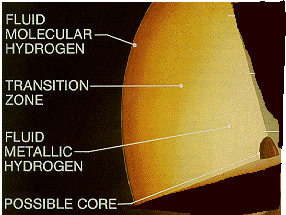
The Liquid Hydrogen Layer
The first liquid layer inside Jupiter, right under the atmosphere, is a layer of liquid hydrogen!. The air becomes thicker and thicker, like a dense fog, with more and more liquid drops, until the hydrogen...more
AU
AU stands for Astronomical Units. It is an easy way to measure large distances in space. It is the distance between the Earth and the Sun, which is about 93 million miles. For really big distances, we...more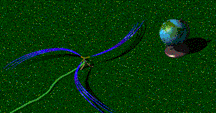
The Spiral of the IMF
The solar wind is formed as the Sun's top layer blows off into space. It carries magnetic fields still attached to the Sun. Streams appear to flow into space as if they are spiraling out from the Sun,...more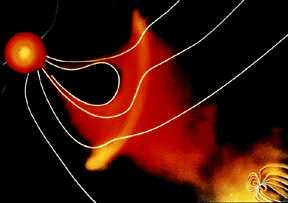
Spiral Path of Material
For a planet to be affected by a blob of material being ejected by the sun, the planet must be in the path of the blob, as shown in this picture. The Earth and its magnetosphere are shown in the bottom...more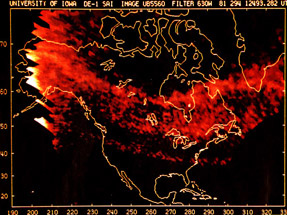
The SAR Arc
If someone says they saw an aurora, you might picture something like this. There is another type of aurora that we can't see. These aurora are called SAR arcs. The SAR stands for Stable Auroral Red. That...more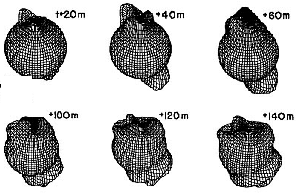
The Effect of Aurora on the Atmosphere
This figure shows the effect of the aurora on the atmosphere. When FAC's enter the atmosphere and create the aurora, they heat the atmosphere suddenly and abruptly. This creates an impulse which travels...more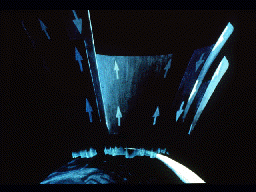
The forming Aurora
This picture shows the flowing of particles into and out of the auroral zone, as Field-Aligned currents (FAC's) take at short-cut through the atmosphere. Some of the particles entering the auroral zone...morePlease log in
Science Blogs
Real Climate: climate science from climate scientists

Windows to the Universe, a project of the National Earth Science Teachers Association, is sponsored in part is sponsored in part through grants from federal agencies (NASA and NOAA), and partnerships with affiliated organizations, including the American Geophysical Union, the Howard Hughes Medical Institute, the Earth System Information Partnership, the American Meteorological Society, the National Center for Science Education, and TERC. The American Geophysical Union and the American Geosciences Institute are Windows to the Universe Founding Partners. NESTA welcomes new Institutional Affiliates in support of our ongoing programs, as well as collaborations on new projects. Contact NESTA for more information.





